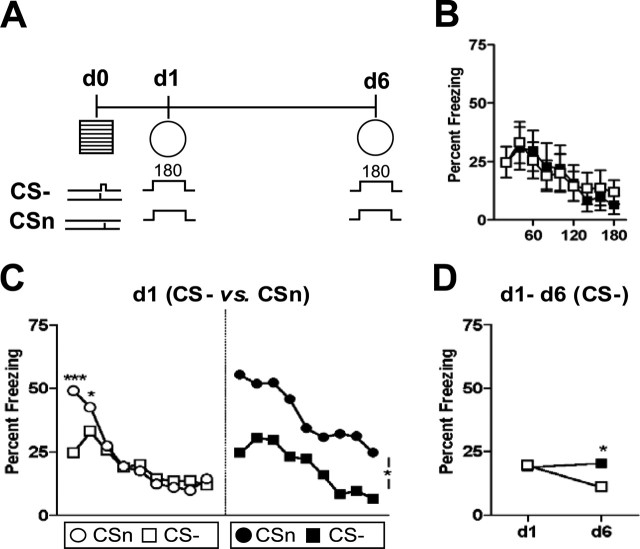Figure 4.
CB1 deficiency does not affect safety learning in a backward conditioning task. A, Both CB1−/− and CB1+/+ underwent a backward conditioning procedure in the conditioning chamber, during which application of the footshock preceded the presentation of the 20 s tone. Mice were re-exposed to the tone for 180 s in the test context the next day and 6 d later. B, CB1−/− (▪, n = 10) and CB1+/+ (□, n = 12) showed the same freezing response to the tone at day 1 after the backward conditioning procedure (mean ± SEM). C, Both CB1−/− and CB1+/+ showed a significantly smaller freezing response to the tone after the backward conditioning procedure compared with the respective sensitized mice (•, ○; compare Fig. 1C). D, CB1+/+, but not CB1−/−, showed a decrease in the freezing responses to the tones from day 1 to day 6 (mean). Data were normalized either to 20 s observation intervals (B, C) or to the entire 180 s observation period (D). ∗p < 0.05; ∗∗∗p < 0.001. ▪ and •, CB−/−; □ and ○, CB1+/+. CS−, tone after backward conditioning procedure; CSn, tone after sensitization procedure; d0, day 0; d1, day 1; d6, day 6.

